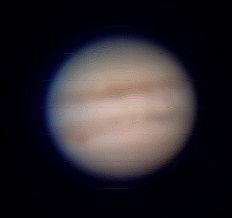iPhone 6s Plus imaging: Moon, Jupiter
Posted: 18 March 2016
|
Open: Thursday, 17 March 2016, 1803 MST Temperature: 89°F |
Session: 936 Conditions: Clear |
First, synced the observatory clock to WWV. 1812 MST: powered on the Meade 12" LX600 telescope; turned the StarLock OFF (remained OFF remainder of the session). Then viewed the Moon, 102X. 1814 MST: my (human) visitors arrived. While waiting for sunset I explained the observatory and the telescope. 1835 MST: sunset. The visitors viewed the Moon at magnifications of 102X and 271X. And just before they had to leave they were able to observe Jupiter and its four Galilean Moons, low in the east, at 271X. Due to the planet's low elevation in the sky the seeing was not good though. 1900 MST: visitors left.
1903 MST: I viewed the Moon, 102X. Then switched to 81X in order to take this handheld iPhone 6s Plus afocal image of the Moon:

Swapped the eyepiece to get 271X and took these handheld iPhone images along the lunar terminator:



Seeing at the Moon was not very good, but the craters Copernicus (middle image above) and Clavius (bottom image) were nice views at times at 271X. 1926 MST: last look at the Moon, 102X.
Went to Jupiter, still low in the east. The four Galilean Moons were still visible and the Great Red Spot was near the planet's central meridian. Switched to 271X but the seeing was not quite good enough yet for that much magnification. 1945 MST: the Great Red Spot was finally looking pretty good at 271X, but the seeing was not improving much as Jupiter rose higher in the sky. 2005 MST: seeing at Jupiter was a little better now. Decided to try some iPhone imaging.
Mounted the iPhone 6s Plus on the telescope using the Orion SteadyPix Universal Smartphone Telescope Photo Mount for afocal imaging at 188X. This image shows the four moons and an overexposed Jupiter:

Switched to 271X. This is a stack of 7310 frames from a slo-mo (240 fps) video (30 seconds):

Seeing was still not very good but the Great Red Spot is visible at the left along the South Equatorial Belt.
Added the Televue 2X PowerMate to get 542X. This is a stack of 4803 frames from a slo-mo (240 fps) video (20 seconds):

The effects of the not-good seeing are apparent.
2049 MST: final look at Jupiter, 102X.
|
Close: Thursday, 17 March 2016, 2100 MST Temperature: 61°F |
Session Length: 2h 57m Conditions: Clear |
Comments are welcome using Email. Twitter users can use the button below to tweet this report to your followers. Thanks.
Cassiopeia Observatory Home Page
Copyright ©2016 Michael L. Weasner / mweasner@me.com
URL = http://www.weasner.com/co/Reports/2016/03/18/index.html
